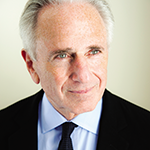 One of the most significant adverse reactions associated with the use of tumor necrosis factor (TNF)-α blocking agents is the increased risk of developing infections, such as tuberculosis (TB). When active TB develops, TNF blockers are discontinued, which can lead to disease flares, because an immunologic agent is no longer being used.
One of the most significant adverse reactions associated with the use of tumor necrosis factor (TNF)-α blocking agents is the increased risk of developing infections, such as tuberculosis (TB). When active TB develops, TNF blockers are discontinued, which can lead to disease flares, because an immunologic agent is no longer being used.
A recent study published in Rheumatology International retrospectively evaluated the medical charts of 2,754 patients who used TNF blockers between 2001 and 2013.1 Patient data collected included underlying rheumatic disease, type and duration of TNF blocker therapy, any concomitant immunosuppressives and the presence or absence of latent TB treatment with isoniazid. Patients who developed active TB during TNF blocker therapy were identified. Time occurrence information, TB type, duration of anti-TB treatment and further treatment with biologic agents were collected from the charts of these patients. TNF blockers were used for ankylosing spondylitis (AS, n=1,211), rheumatoid arthritis (RA, n=1,023), psoriatic arthritis (PsA, n=207), juvenile idiopathic arthritis (JIA, n=120), Behçet’s syndrome (BS, n=113) and 80 patients with other diagnoses, such as Takayasu’s arteritis, granulomatosis with polyangiitis, adult-onset Still’s disease and familial Mediterranean fever with amyloidosis. Prescribed agents included etanercept (40%), adalimumab (30%) and infliximab (30%).
Of the 2,754 patients treated with a TNF-blocker, 22 (0.79%) developed active TB. The median duration of TNF blocker therapy was 33 months. Most cases had extra pulmonary TB (59%). One patient with miliary TB died within one month of TB treatment. Twenty-one patients were successfully treated for TB. After TB diagnosis, 16 patients (76%) restarted a biologic agent, four while still taking anti-TB treatment. The most frequently reinitiated biologic agent was etanercept (n=6), followed by rituximab (n=5), interferon-alpha (n=3, BS patients), adalimumab (n=1) and golimumab (n=1).
After restarting the biologic, median follow-up was 53 months. TB recurred in only one patient, who had Behçet’s syndrome. This patient had a long protracted treatment due to a sight-threatening disease that was treated with etanercept, then canakinumab, along with methotrexate, cyclosporine and corticosteroids. After a second, nine-month TB treatment course, this patient has been stable—receiving interferon-alpha for 33 months.
In the study, the authors note that managing patients with a history of TB during TNF blocker therapy is still challenging. However, although retrospective in nature and not without limitation, this review shows that restarting anti-TNF and other biologic agents—even during TB treatment—seems to be possible among patients who had previously developed TB while receiving TNF-blocker treatment.
